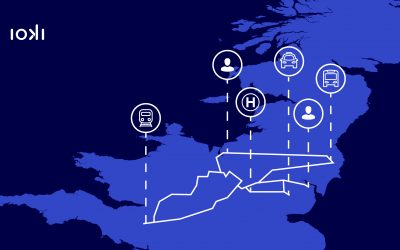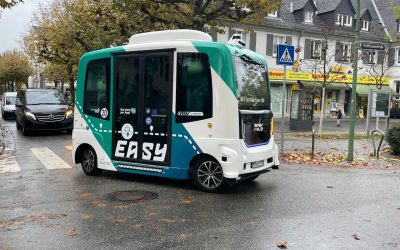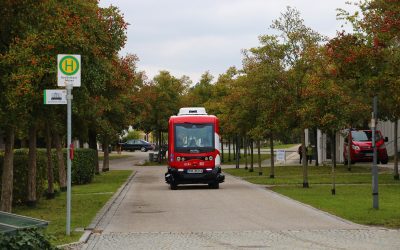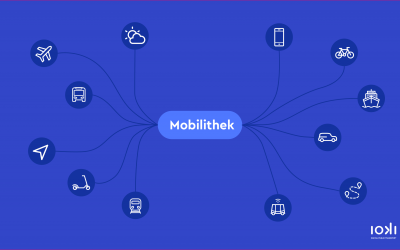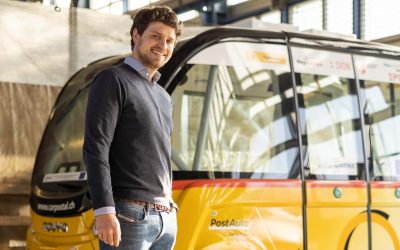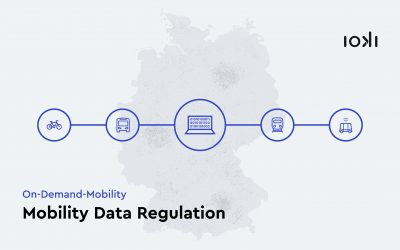Planning mobility for rural areas: What about public transport in England, Wales and Scotland?
55 million German citizens living in suburban and rural areas do not have access to attractive public transport offerings. This was the result of our mobility analysis of public transport in Ger-many. But what about public transport in England, Wales and Scotland? Our transport planners investigated this question. Around 450,000 weekday trips from timetables of over 300,000 stops in England, Wales and Scotland were analysed. The result: in all three parts of the country (except London), less than 20 per cent of the population have access to attractive public transport.
Mobility Turn, now! Mobility of the Future in Baden-Wuerttemberg
In the previous edition of “Mobility Turn, now!” we looked at the measures taken by the state of Hesse to enable citizens to travel in a climate-friendly way by local transport. This time we are taking a closer look at Baden-Wuerttemberg.
What is… a local public transport plan?
A local public transport plan is a planning instrument in which all performance and quality criteria for the operation of local public transport in an area are acquired. The local transport plan analyses the existing mobility offer and serves as a guideline for the future development of local mobility.
Easy through the Mobility Turn: Autonomous On-Demand Traffic in the Rhine-Main Region
The mobility turn cannot be achieved without digital and forward-looking mobility offers. The goal “more mobility with less traffic” can only be realized by the merging of different digital technologies. One key element in this effort can be autonomous vehicles on demand.
Mobility Turn, now! Mobility of the Future in Hessen
65 million tons less CO2 emissions till 2030 – this is the climate goal for the German transportation industry. More electric mobility, a modernized rail network and billions for the development of public transport are supposed to contribute to the effort of Germany becoming more climate friendly.
But which measures are being taken on a federal level to enable citizens to be sustainably mobile with less ecologically harmful traffic? What progress is being made in the efforts to expand public transport, to reactivate old train tracks and to install new bike lanes? We answer these and other questions in our new blog series “Mobility turn, now!”. We want to show pioneering mobility projects in each federal state as an example for a successful and sustainable mobility turn in Germany.
PERSPECTIVES from Philipp Hanßen
Philipp Hanßen is a transport planner in ioki’s Mobility Analytics and Consulting (MAC) team. He started his career at ioki 2.5 years ago as an intern and working student in the MAC team and is currently writing his thesis for his master’s degree in transport engineering at ioki. The thesis sheds light on the framework conditions for the successful use of on-demand transport in rural areas. Since the end of 2021, he has been supporting the interdisciplinary team as a transport planner in actively shaping the transport revolution.
Autonomous shuttles in Bad Birnbach – or why you find the future of public transport in rural areas
When you think of the future of mobility, you see young people racing through skyscraper canyons in futuristic robot taxis in your mind’s eye. In reality, most autonomous projects do not drive sleek robot taxis in German metropolises. Instead, ponderous-looking minibuses, so-called people movers, move through narrow alleys and across marketplaces in smaller towns and rural areas. This is the case in Bad Birnbach, for example. The small town in the Lower Bavarian spa triangle, which is known for its thermal baths, has been attracting not only wellness guests but also fans and experts of new mobility since 2017. The reason for this is a small, box-like vehicle with a top speed of only 15 km/h: it is Germany’s first autonomous public bus!
It’s all about that database – with the Mobilithek all mobility data is in one place
Good news for all those involved in the mobility cosmos: Since July 1, 2022, it has been one for all: one platform for the exchange of all relevant mobility data. This is made possible by the Mobilithek. This new central, uniform and user-friendly access point of the Federal Ministry for Digital and Transport replaces the previous platforms “Mobility Data Marketplace” and “mCLOUD”.
PERSPECTIVES from Alexander Pullig
Alexander started his journey in the DB Group at DB Regio Bus. As a product owner of the “Wohin du Willst” app, he already dealt with the question of how classic public transport solutions can be digitalized. Since joining ioki, he has been helping to build the ioki platform for digital mobility and is constantly developing it. He has always wanted to improve mobility in rural areas, since he was always dependent on a car in the city where he grew up.
PERSPECTIVES from Hanna Kops
Hanna Kops is Head of Experience at Transport for London. She leads the digital design team who is responsible for the experience strategy, innovation, and design across all digital channels for one of the largest transport systems.
PERSPECTIVES from Martin Neubauer
Martin Neubauer has already made several stops in the mobility sector. He has been with PostBus for two years now, where he is responsible for the business area of autonomous driving. Since the end of 2020, he has also held his mandate as Executive Director of the Swiss Association for Autonomous Mobility.
Mobility Data Regulation
Last September, the starting signal was given for the large-scale use of mobility data in transport planning. The Federal Council has agreed on the implementation of the German Mobility Data Regulation. The new regulation makes it possible to make German mobility data available on the so-called Mobility Data Marketplace. For companies from the mobility sector, the new regulation enables access to data sets which were not available before. Through the use of these data sets in the mobility sector, customers will benefit from new, data-driven mobility concepts that are precisely tailored to the actual mobility needs on site.

